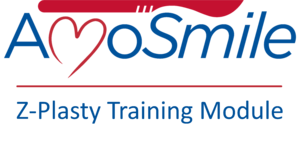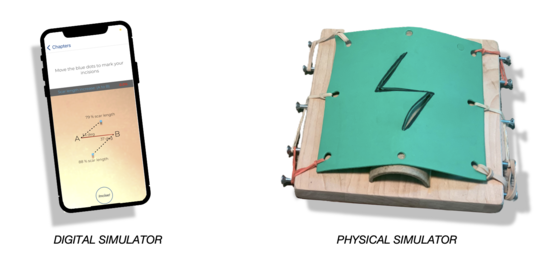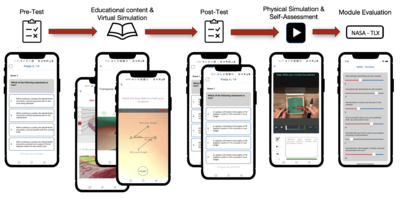
Z-plasty is a random-pattern local flap and an essential tool within the reconstructive surgery repertoire. It is primarily used to (1) lengthen contracted scars resulting from burns and trauma, (2) reorient conspicuous scars for better alignment with natural skin folds, and (3) deepen contracted web spaces.
Learning Objectives[edit | edit source]
This training module combines virtual and physical simulation in order to impart knowledge and skills for clinical competency in z-plasty.

Within the module, learners will direct themselves through a comprehensive curriculum covering the indications, design, complications, and surgical techniques relevant to performing z-plasty. After successfully completing the module, learners will:
- Understand the function of and indications for z-plasty
- Understand the principles of z-plasty design
- Describe and implement the stepwise surgical technique for performing z-plasty
- Understand the complications of z-plasty and how to avert them
Syllabus[edit | edit source]
Educational content[edit | edit source]
- Z-Plasty Summary
- Think like a Reconstructive Surgeon
- Flap Classifications
- Virtual simulation
- Post-module assessment
- Physical simulation & self-assessment
- New Tissue simulator assembly!
- Felt simulator Assembly instructions
- About AmoSmile
How To Follow This Syllabus[edit | edit source]
The Z-plasty training module is contained within the free and easy-to-use Amosmile smartphone application. Begin using the AmoSmile app by creating your personal account. Next, select the Z-Plasty module from the Module Menu.
Within the Z-plasty module of the AmoSmile app, begin by completing a 20-question pre-module assessment to evaluate your baseline knowledge.
Review the carefully curated educational content contained within the Z-Plasty module. This includes text, diagrams, and interactive graphics pertaining to the function, design, indications, complications, and surgical technique of z-plasty.
After mastering the provided educational content, put your newly acquired knowledge to task using the virtual simulator. Here, you will be asked to perform a virtual z-plasty within a simulated clinical scenario.

After completing the virtual simulation, complete an 80-question post-module assessment to evaluate your readiness to proceed in the course. A minimum passing score of 80% accuracy is required to qualify for continuation to the physical simulator.
Complete the video tutorial for constructing your physical simulator. You will then be guided through a simulated clinical scenario using your physical simulator. Stepwise self-assessment questions are integrated into the simulation to provide a performance feedback loop toward mastery learning. After completion, your score will be displayed alongside targeted guidance for additional review. Repeat the physical simulation until a perfect self-assessment score is achieved. You will then receive a Certificate of Completion, marking the conclusion of the module.
Along with the pre/post assessments and virtual simulation self-assessments with directed learning feedback, learners must complete the NASA-TLX tool to aid in our continued development of this and other modules. Further, learners will complete the physical simulator with the OSATs and CCAT assessment tools, which will be used in conjunction with case reports for clinical validation.